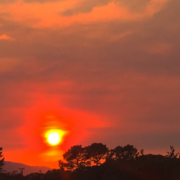Wildfire Readiness – 5-Step Plan for Bay Area
Wildfire Readiness – 5-Step Plan for the Bay Area The essentials of what you can do now – including a list of the most fire-prone plants Though it is wet today, the forecast shows temperatures steadily climbing, into the 90’s through next week. In fact, according to Daniel Swain, weatherwest.com, we may be […]


